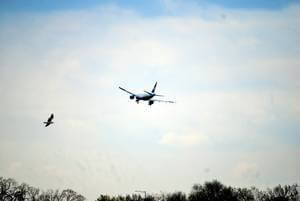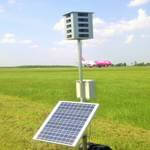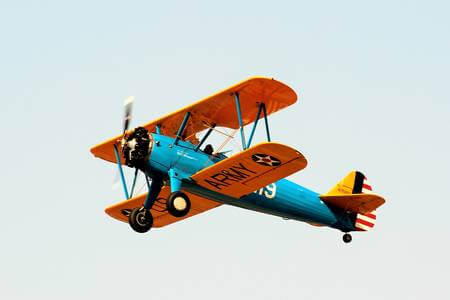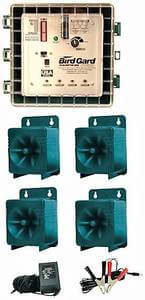This article explains the not uncommon problem of bird collisions with airplanes. It describes the most commonly used methods for bird control at heliports and airports.
- Falconry services
- Bioacoustic Bird Repellers
- Laser Deterrents
- Flares
Bird strikes with airplanes are common
News about birds colliding with airplanes and causing damage to the aircraft is not uncommon.

One such incident occurred some time ago with Air Namibia. Just as an aircraft from this airline was about to land with over 100 passengers on board, a bird struck the side of the plane. The impact caused a large hole in the aircraft. Fortunately, the pilot was able to control the situation and safely land the plane without any harm to the crew or passengers.
However, birds pose a danger to all types of aircraft and can even bring down an airplane.
Fortunately, these collisions generally do not affect flight safety. However, they do result in significant losses in the civil and military aviation industry each year.
To ensure the safety of airplanes, wildlife control departments synergistically employ various bird control solutions at heliports and airports, aiming for 24/7 protection.
These solutions are designed to deter birds from runways, reducing the risk of collisions with aircraft.
Main methods of bird control at heliports and airports
As reported by Aena on its website, some Spanish airports utilize falconry methods to prevent birds from invading the airport area.
Falconry is generally an expensive service that requires a multidisciplinary team of falconers, falcons, eagles, and dogs. This team must patrol the airport daily and implement complex falconry techniques. The high cost of fal conry, in the case of air safety at major airports, is justifiable and manageable.
To achieve 24/7 coverage at airports and heliports, falconry wildlife control is often combined with other deterrent methods, including:

- Flare launching
- Laser bird deterrents. These laser deterrents emit green laser beams of type 3B that scare and repel birds from runways.
- Sonic-based bird deterrents. These sound-based bird deterrents emit distress calls of birds of prey, which scare and repel birds.
BirdGard Iberia’s Experience in Bird Control at Airports and Heliports
BirdGard Iberia collaborates with Aena in bird control at Spanish airports and heliports. We provide bird control solutions using Agrilaser handheld laser deterrents and bioacoustic deterrents.
The Agrilaser handheld laser deterrents that we supply to Aena are used by the airport’s wildlife control operators to repel birds from runways.
The bioacoustic deterrents that we provide to Aena are the BirdGard Super Pro models with a coverage of 2.4 hectares per unit. These units are installed with 12-volt batteries powered by 25-watt solar panels to ensure continuous operation.
The BirdGard Super Pro bird deterrents have been configured with chip #20, specifically designed to repel seagulls from the heliport naturally, without causing harm to the birds.
If you are responsible for wildlife control at a heliport or airport and are facing bird-related issues, feel free to contact us. One of our experts will provide you with free advice on the most effective solution for your situation.


